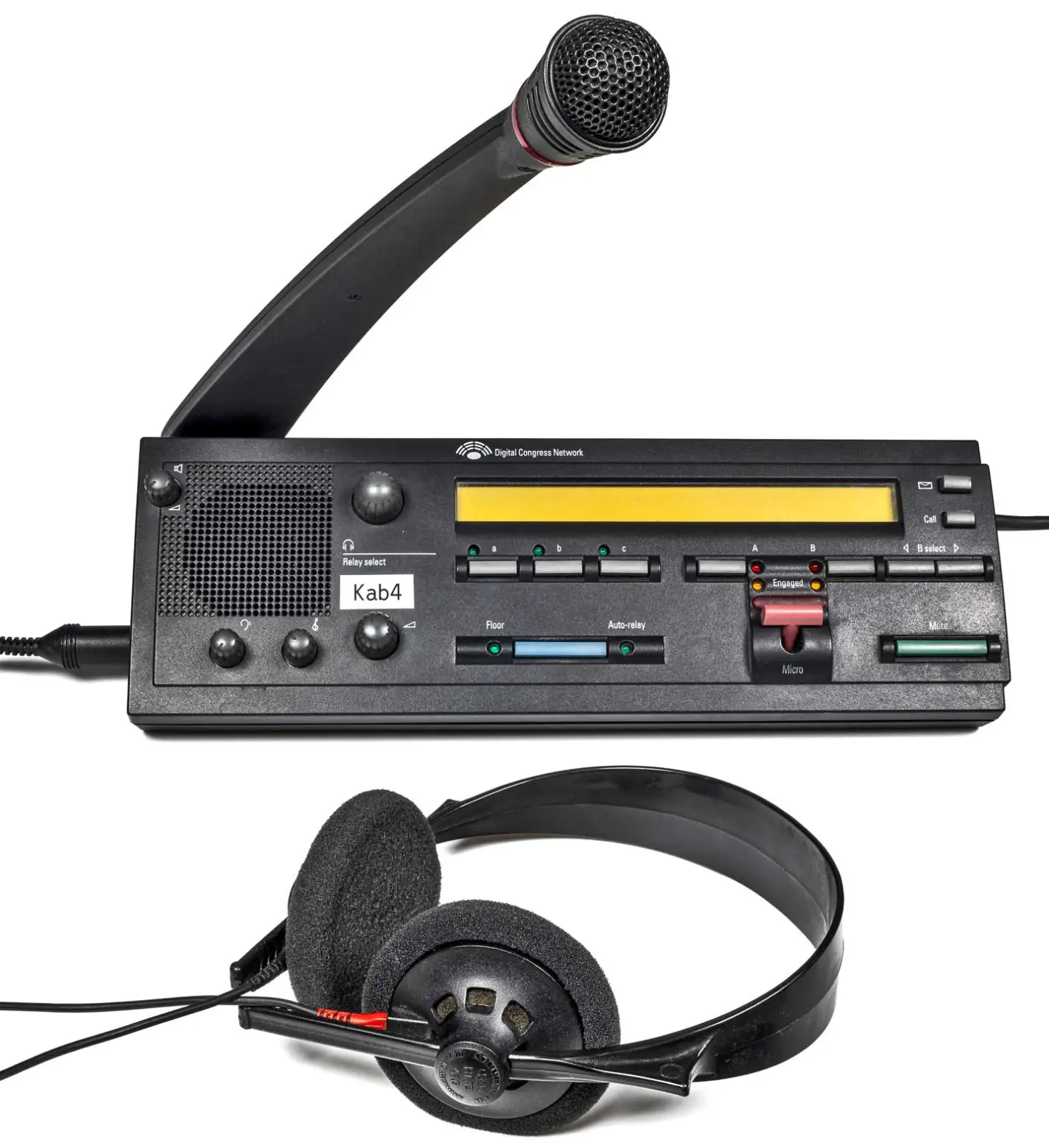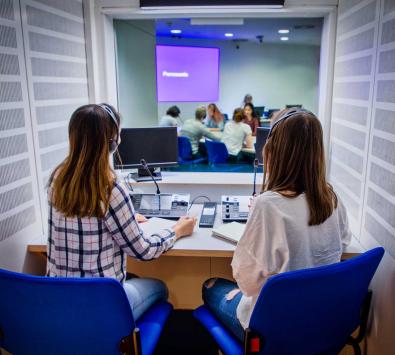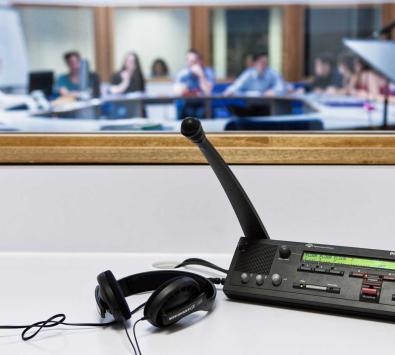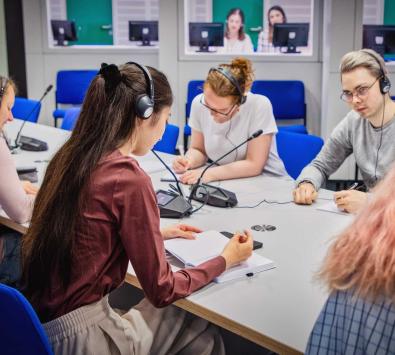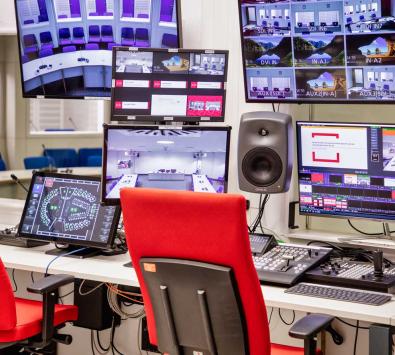In simultaneous interpreting, you work in a soundproof interpreting booth, which is shared by two or three people. They regularly take turns every 20-30 minutes, as interpreting is very strenuous.
The interpreters can use the call station to select which channel they want to hear – for example, the original voice or an interpretation from another booth. They also determine the channel through which listeners can in turn hear their interpretation. With the help of various rotary knobs, they can individually adjust the treble, bass and volume of the original sound so that they can interpret optimally. The microphone is only switched on when the interpretation is being transmitted. If you have to cough, sneeze or get annoyed with yourself during the interpreting, then the throat clearing button comes into play!
The station shown here is part of the Philips Digital Congress Network (DCN) system. At the end of the 1990s, it was the first purely digital conference and interpreting system to be used at the Faculty 06 of Translation, Linguistics and Cultural Studies in Germersheim, initially in two, and later in all five interpreting rooms.
The technology is very robust and so it is still in operation today in interpreting rooms III, IV and V. Since 2019, Bosch's Discentis system has been used as a discussion and interpreting system in the largest and connectable interpreting rooms I and II with an attached video control room. This means that the department is once again at the cutting edge of technology and close to the market.
